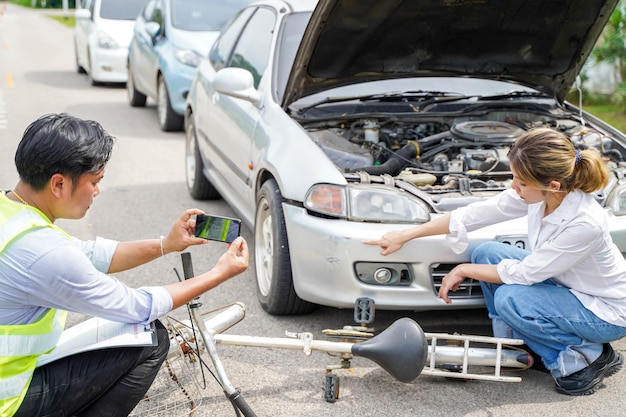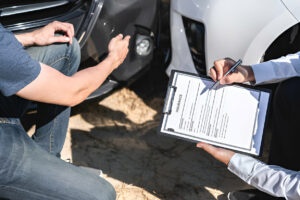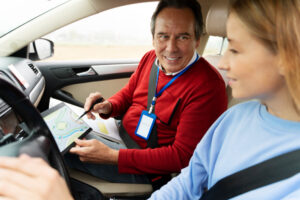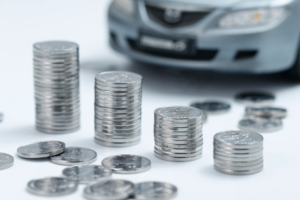In an increasingly developed world, roads are shared by various consumers, drivers, pedestrians, and cyclists. As more cities and towns inspire walking and cycling as maintainable ways of transportation, it has become necessary for drivers to be aware of these defenseless road users.
Pedestrian and cyclist awareness is not only a subject of safety but also a crucial factor of adopting pleasant, efficient, and eco-friendly rural environments.
Pedestrian safety in the UK is a vital concern for everyone using the roads, from casual walkers to busy travellers. Regardless of improvements in recent years, the UK still meets considerable challenges in safeguarding the safety of pedestrians.
The Increasing Popularity of Cyclists & Pedestrians
With increasing awareness about health, eco-friendly sustainability, and economic benefits, more individuals are choosing to walk or cycle rather than drive. Cities and towns around the world are participating heavily in bike lanes, pedestrian-friendly zones, and traffic-comforting measures to support this evolution. However, despite these efforts, accidents involving cars and non-motor-powered road users remain frighteningly high.
According to the World Health Organization, pedestrians and cyclists account for nearly 25% of road traffic accidents each year. This statistic underlines the need for keen awareness among drivers to help reduce loss of life and injuries.
Understanding Defenceless Road Users
Individuals walking and cycling are mostly helpless due to their lack of physical protection in the event of an accident. Unlike drivers, who are protected by the structural integrity of a vehicle, pedestrians and cyclists are fully uncovered. This makes even low-speed collisions potentially critical or severely unbearable.
Additionally, cyclists and pedestrians may be less observable, especially during bad weather conditions, nighttime, or in areas with congested views. They also move at changing speeds and can change direction suddenly, which demands that drivers remain attentive and quick to respond.
Legal Responsibilities and Honourable Considerations
Many countries have implemented laws to protect helpless road users, highlighting the liability of drivers to practice caution and return to pedestrians and cyclists when necessary. For example, several territories authorize a minimum passing distance when overtaking cyclists or require vehicles to stop at crosswalks when pedestrians are nearby.
Beyond legal agreements, there is a moral responsibility for drivers to defend the well-being of other persons. A road accident may cause trouble or injuries to a driver but can have life-changing outcomes for a pedestrian or cyclist. Admitting this imbalance is critical to encouraging empathy and promoting safer driving routines.
Benefits of Improved Awareness
Improving driver understanding of pedestrians and cyclists offers several advantages, including:
- Decreased Accidents:
By remaining alert and focused, drivers can knowingly reduce the risk of accidents with pedestrians and cyclists.
- Enhanced Traffic Flow:
Recognizing and adjusting non-motorized road users helps minimize overcrowding and improves overall traffic efficiency.
- Environmental Advantages:
Inspiring walking and cycling provide to reduced carbon emissions and promotes healthier way of life.
- Positive Public Relations:
Humble coexistence among road users adopts goodwill and aids in creating a more planned and organized urban environment.
Useful Tips for Drivers, Pedestrians, & Cyclists
Driver Responsibilities:
- Watch Before Turning:
Drivers must view carefully before turning at junctions and roundabouts, as cyclists and pedestrians may be nearby.
- Avoid Over-Speeding:
Speeding drastically increases the possibility of accidents, especially those involving innocent road users.
- Be Aware of Diversions:
Drivers should avoid distractions like mobile phones, as they can make worse reaction times and attentiveness.
- Give Enough Overtaking Distance:
Keep a safe distance when overtaking cyclists, and avoid overtaking on roundabouts.
- Be Watchful When Opening Car Doors:
Drivers should always check for cyclists or walkers before opening car doors.
- Check your mirrors
Before setting off from a fixed position, such as at a junction, always check your side mirrors and make sure it is safe to drive.
Pedestrian Safety Suggestions:
- Pedestrian crosswalks:
Drivers must give way to pedestrians on zebra crossings or pedestrian crosswalks.
- Parallel Cross-roads:
Drivers must give way to pedestrians and cyclists on parallel crossroads.
- Cyclist tracks:
Cyclists should give way to pedestrians on cycle tracks.
- 20 mph Areas:
Controlling speed limits in residential areas and near schools and hospitals can significantly decrease the seriousness of pedestrian injuries in the occurrence of an accident.
Cyclist Safety Steps:
- Cycle Tracks:
Cyclists should use cycle paths where available and be aware of traffic circumstances.
- Prominence:
Cyclists should wear brightly coloured clothing and use lights, especially at night time, to increase visibility.
- Secure Overtaking:
Cyclists should be alert of vehicles overtaking them and make sure they have enough distance to pass safely.
- Use a Cycle Bell:
Unlike a vehicle, you will not have the use of a horn, so you will need to use your cycle bell to make cars and pedestrians attentive of you when you are on the road.
- Maintain your Bicycles:
Just like a car, it is best to have your bike tuned on a yearly or monthly basis to make sure that it is in good working order. Before any trip, you should always check your brakes and tyre pressure.
Final Thoughts
Promoting pedestrian and cyclist consciousness is a shared obligation that requires drivers to remain observant, respectful, and attentive. By promoting an origin of safety and empathy, we can significantly decrease accidents and create a more comprehensive, efficient, and naturally friendly transportation network.
Pedestrians and bicyclists are an essential part of our country. Identifying their presence and adjusting driving routines accordingly is not just about following laws; it’s about involving a mindset that prioritizes the safety and comfort of all road users.
Making a Road Traffic Accident Claim with Accident Claims Assist
We identify that every road traffic accident is exceptional, and we are here to offer you a free, no-obligation consultation to discuss your specific accident circumstances. During this consultation, we will listen gently to your experience, carefully review the accident details, and evaluate the potential strength of your claim. Our experienced team will then connect you with one of our panel solicitors who specialises in road traffic accident claims, confirming that you receive the legal representation needed to route the complexities of the legal process and secure the compensation to which you are eligible.
Do not let a road traffic accident dislocate your life. Contact Accident Claims Assist today for your free consultation and take the key steps towards obtaining the justice and determination you deserve.






